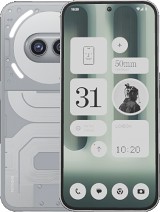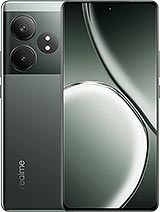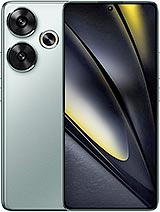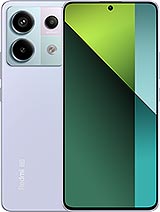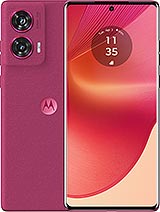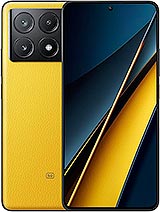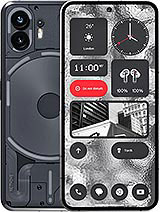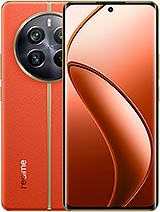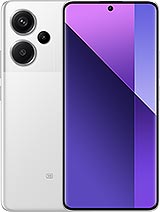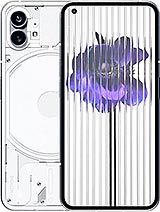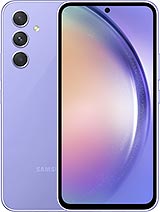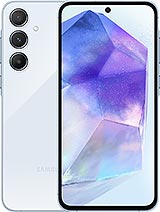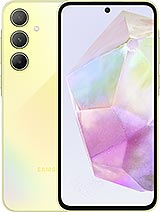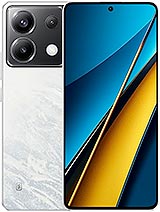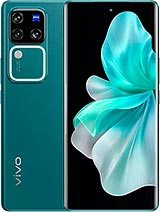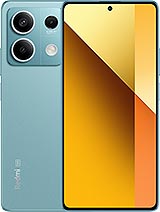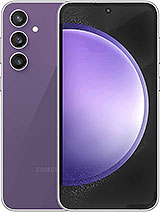Nothing Phone (2a) Plus review

Display
The display on the Nothing Phone (2a) Plus is identical to that on the Nothing Phone (2a), which, in turn, has a very similar display to the Nothing Phone (2). The size is 6.7 inches with a 20:9 aspect ratio. The resolution is 1080 x 2412 pixels. That works out to around 395 ppi, which looks perfectly sharp. You also get a 120Hz refresh rate, as well as 10-bit colors and accompanying HDR10+ support.

All of these specs are identical to the Nothing Phone (2a) and the Nothing Phone (2). However, it is worth noting that the Nothing Phone (2a) Plus and (2a) lack LTPO, which means that their refresh rate switching is a lot less dynamic than on the Nothing Phone (2).
Nothing claims the screen can achieve 1,100 nits of full-screen brightness and 1,300 nits peak. We ran our standardized testing and didn't manage to quite match these claims, but we still got a very respectable 1,097 nits out of our Nothing Phone (2a) Plus unit. That's perfectly usable outdoors. Also, it is a bit better than the Nothing Phone (2a) that we measured at around 981 nits. In manual mode, the Nothing Phone (2a) Plus managed to output around 736 nits, again, a bit better than the Nothing Phone (2a).
The minimum brightness at point white is just 3 nits.
Let's talk about the refresh rate for a bit. The Nothing Phone (2a) supports a total of three refresh rate modes as reported by the OS - 60hz, 90Hz and 120Hz. In terms of settings, there are three modes to choose from - Standard, which locks the refresh rate at 60Hz and High and Dynamic, both of which go up to 120Hz and have slightly different automatic switching behavior.

Both high and Dynamic modes increase the refresh rate to 120Hz when interacting with the screen. After a few seconds of inactivity, it automatically drops down to 60Hz. Both modes also recognize full-screen video playback in most apps and toggle a 60Hz refresh rate to save power. The one major difference between the two is that Dynamic mode tends to toggle 90Hz instead of 120Hz for many apps. That way, you still get a bit of extra smoothness in scrolling and animations but also save on more power.
As for high refresh rate gaming, we unfortunately didn't have much luck getting games to push past the 60fps mark regardless of which profile we used.
As we mentioned, the display on the Nothing Phone (2a) supports HDR10+. In terms of hardware decoding, the phone can handle HDR10, HDR10+ and HLG. Just no Dolby Vision. The phone also has the highest possible Widevine L1 DRM certification, allowing streaming apps like Netflix to offer up FullHD streams.
Battery life
The Nothing Phone (2a) Plus has a 5,000 mAh battery on board. In keeping with Nothing's track record, the Phone (2a) Plus delivers excellent battery life all around with an Active Use Score of 16:48 hours. In fact, Nothing has improved some of the battery scores compared to the Nothing Phone (2a), like web browsing.
Our new Active Use Score is an estimate of how long the battery will last if you use the device with a mix of all four test activities. You can adjust the calculation based on your usage pattern using the sliders below. You can read about our current battery life testing procedure here. For a comprehensive list of all tested devices so far, head this way.
Charging speed
Charging is one of the areas in which Nothing decided to introduce a small upgrade on the Phone (2a) Plus. It is rated for 50W of charging, compared to the 45W of the Nothing Phone (2a). Charging seems to be done via Power Delivery 3.0 (no wireless charging is available). It also offers some Quick Charge support, but not at full speed. There is no charger in the retail box, but Nothing has never included one in its retail boxes, so this is no surprise.

We got ourselves a good brand-name 65W PD charger and a 5A Type-C to Type-C cable for testing. Using that setup, we managed to get from zero to 30% in fifteen minutes, which is not ideal, but then speeds picked up a bit, and we got to 60% in thirty minutes. A full charge took us just over an hour. These speeds are far from the best available in this price bracket but are quite solid overall. The actual charging speed upgrade over the regular Nothing Phone (2a) is minimal. We would have tested with an official Nothing charger, but it is pretty hard to acquire and seemingly often out of stock.
Speakers - loudness and quality
The Nothing Phone (2a) Plus essentially has the same stereo speaker setup as the Nothing Phone (2a). It is a hybrid setup with the amplified earpiece acting like the second channel. The other speaker is positioned on the bottom frame. This inherently brings about some imbalance in the sound output since the two speakers aren't facing symmetrically.
The sound quality of the Nothing Phone (2a) Plus is also very decent and almost identical to that of the Nothing Phone (2a). You get clear mids and nice undistorted highs. Not a lot of bass, though.
In terms of loudness, the phone managed a GOOD rating in our testing.
Use the Playback controls to listen to the phone sample recordings (best use headphones). We measure the average loudness of the speakers in LUFS. A lower absolute value means a louder sound. A look at the frequency response chart will tell you how far off the ideal "0db" flat line is the reproduction of the bass, treble, and mid frequencies. You can add more phones to compare how they differ. The scores and ratings are not comparable with our older loudspeaker test. Learn more about how we test here.
Connectivity
The Nothing Phone (2a) Plus is a 5G device with SA/NSA Sub-6 support on both Nano-SIM slots simultaneously. Unfortunately, there is no eSIM support. GPS (no L5), GALILEO, GLONASS, BDS and QZSS are supported for positioning.
Local connectivity is covered by dual-band Wi-Fi 6 ax and Bluetooth 5.3 with LE support. There is NFC on board as well. No FM radio or 3.5mm audio jack, though.

The USB Type-C port is backed up by a basic USB 2.0 data connection, with a maximum transfer rate of 480 Mbps. There is USB Host/OTG support but nothing else fancy, like video output over Alt mode.
In terms of sensors, you get a lsm6dso accelerometer and gyroscope combo, a stk3acx light and proximity sensor. It is a proper hardware proximity sensor, which is great to see. Finally, there is a memsic mmc5603 magnetometer and compass combo. No barometer on board.
This is identical to the Nothing Phone (2a), as expected.
Reader comments
- BRENDA K
- 10 Mar 2025
- fnI
how is the picture quality for thus phone
- otakufrank
- 10 Feb 2025
- pwv
Because Xiaomi sucks. Hyperos is bad and you get a system full with ads.
